The year was 1960. Tom Blake gazed out at the two young Florida surfers riding wave after wave of six foot flawless peeling surf. Perched in his lifeguard chair on the beach in Boca Raton, his mind rode every wave as though he was there with them- even though his advancing age and health issues had marooned him on the perfect white sand shore….
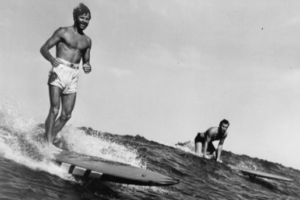
Tom Blake on his hollow paddleboard-1930s
To anyone familiar with surfing’s colorful history the name Tom Blake sits at the very top of the pantheon of legendary surfers. Blake, born in 1902, became infatuated with surfing at a young age growing up in Wisconsin. Blake met Duke Kahanamoku at a movie theater in Detroit where the Duke was giving an exhibition after his gold medal wins in the 1920 Olympics. That meeting set a course for the nomadic surfing lifestyle that led Blake to travel to Hawaii in 1924 to pursue his passion. The surfing culture he found in Waikiki was steeped in the Hawaiian traditions of riding solid planks of wood that were heavy (often 75 pounds or more) and required great skill to ride. Blake was a natural innovator and felt that he could design a modern surfboard that was both light and more maneuverable. After a number of experiments Blake developed the hollow surfboard, built like an airplane wing with a rib and spar construction sheathed in plywood. The result was a surfboard half the weight of a traditional Hawaiian plank that was easy to build, surf, and carry to the beach. The first surfboard revolution had begun. Additionally, Blake was a skilled surfer and paddleboarder in superb physical shape. Blake, with his new design, was unbeatable in the intensely competitive paddleboard racing competitions in Waikiki. But Blake’s restless spirit could not keep him in Hawaii for long. He began a lifetime of wandering which took him to every coast and corner of the US including years spent in Florida.
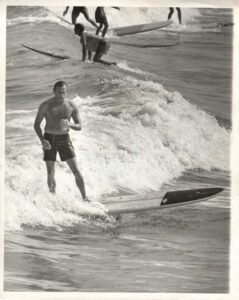
Murf in Miami Beach
Jack Murphy (Murf the Surf) was born in Los Angeles California to working class parents. He soon became involved in the surfing lifestyle. He quickly developed his natural talent but soon his family moved to Pennsylvania, temporarily cutting off his surfing ambitions. After he graduated from high school he fled south to Miami Beach in 1955. The beach scene on South Beach suited him and he met and teamed up with fellow refugee Dick Catri. They formed a high diving stunt team and got steady work entertaining tourists at the area hotels- the Miami version of Waikiki’s beach boys.
Surfing in Miami goes back to the 1930s when two brothers of a wealthy family, Bill and Dudley Whitman, had a chance meeting with Tom Blake in 1930. Blake showed the brothers his newly patented invention, the hollow surfboard. They quickly became friends and the brothers built a couple of hollow surfboards for themselves- the first ones ridden in Florida. Decades later Jack Murphy, who was now going by the name Murf, ran into Bill Whitman on the beach. Under his arm Whitman had a brand new Hobie foam surfboard, the first one that Murf had seen. There were still just a handful of surfers in Miami at the time so they connected as well. This is likely where Murf got his introduction to the story of Tom Blake.
Murf later became notorious for the Star of India jewel theft and the Whisky Creek murders but in his early days in Miami, he and Dick Catri were living the carefree beach lifestyle- surfing, high diving for spending money, chasing girls and driving fast cars. The typical gutless wind slop of south beach got old after a while and Dick and Murf began heading north looking for bigger and better waves.
The farther north they traveled the better the waves got. Murf and Dick eventually ended up in Cocoa Beach in 1959 and set themselves up at the Starlite Motel, managing beach rentals and making surfboards. Around 1960 Bill Whitman mentioned to Murf that Tom Blake was working as a lifeguard in Boca Raton and Murf took the opportunity to meet the legendary surfer for a legendary surf session.
Murf describes the encounter in his own words:
1959-1960, Bill Whitman, old friend of Tom Blake, told me that Tom was taking care of a beach facility on the south side of Boca Raton Inlet (on the east side of A1A) in what is now called South Inlet Park.
Residents of that area used the facility, and I got the biggest kick out of finding out that very few people had any idea that this old salty dog was Surfing Royalty, that he was the 1st American haole to be a member of the surfing in-crowd in Hawaii (Duke, Rabbit, Steamboat, Blue Makua, Buffalo), Tom introduced the skeg (which radically changed surfing), and on & on & on…
Since I frequently traveled back and forth from Cocoa Beach to Miami Beach I would stop and visit Tom. We would have a glass of carrot juice, I would ask questions and he would tell these awesome stories. I would show him the boards I was making and he would give me ideas and pointers that I would take back to my shop and apply to the new boards.
Tom’s beach facility was about 1-2 hundred yards south of the Boca Raton Inlet jetties. He would tell about winter nor’easters where the waves wrapped around the jetties and make beautiful waves, but he had never seen anyone ride them.
Bobby Goldberg was staying with me in Indialantic, a storm was sitting off shore and it was too crazy to paddle out there. I had business in Miami, so Goldberg and I headed south in his surfing hearse. We stopped to see Tom and it turned out to be one of the greatest days in my life.
The sky was blue, the ocean was clean and smooth, the southbound waves were everything Tom had told us about. Head high, long lefts were pouring around the inlet jetties, it was awesome.
As Goldberg and I waxed our boards, Tom got a big mug of carrot juice and positioned his Lifeguard chair where he had a grand view of the arena. Next to the south jetty the rip tide was moving back out to sea. It was a perfect set up for easily getting back into the lineup. Out we stroked, I paddled into a beautiful left and traveled the length of a football field all the way to shore. It was like surfing at Slater’s Surf Ranch in California, the wave was flawless.
As I finished that 1st wave, I now had to run back to the jetty to paddle out again. Looking to the lineup, there was Goldberg repeating my ride, it was probably the neatest wave he ever rode.
Tom Blake had his hands in the air and his smile was a mile wide. For the next 2 hours, Goldie and I showed off for the greatest audience in the world, the legendary Tom Blake.
After the session we visited with Tom for a while. He thanked us, we thanked him, then we headed to Miami. It was quiet driving south. There was nothing to say. We just grinned and shook our heads. It just couldn’t get any better. Damn, that was Tom Blake watching and cheering us on. Are you kidding me?
That was 60 years ago, I still get choked up remembering that day…
Ft. Lauderdale News, Oct. 1960
Blake spent several years as a lifeguard at the Boca Raton Beach Club. During that time, he twice paddled out in huge storm surf to rescue boaters who had been tossed out of their boats by the waves. On one of these he paddled out half a mile on his rescue paddleboard and brought two boys, ages five and seven, safely to the beach. The story was splashed all over the newspapers at the time and he took the opportunity to credit his paddleboard as an indispensable rescue tool, “ You can move twice as fast as you can swim, rest when you want to, and if the rescued person hasn’t passed out he can help you paddle…with all their advantages I can’t understand why lifeguards, particularly those in Miami Beach, aren’t using them”.
Blake left not long after that epic surf session and continued his wandering ways. He practiced an ascetic, vegetarian lifestyle and wrote several books on his philosophy of living based on lessons learned from surfing. Murf and Catri surfed Sebastian Inlet (Monster Hole) for the first time in 1959 in their search for better waves. Catri then left for Hawaii, conquered the big surf of the North Shore and returned to Florida in 1964 where his legendary Hobie surf team spawned many of the most famous surfers on the East Coast. Murf opened up the first surf shop in Central Florida where he made surfboards, sponsored contests, and won many contests as well. After a few years his business ran into problems and he took the dark path into crime and imprisonment. Murf eventually found redemption in Christ while incarcerated and , upon release in 1986, started a new life preaching in prison ministries. Bill Whitman continued promoting surfing in Florida, pioneered surf spots in the Bahamas and traveled the world searching for rare tropical fruit as a renowned horticulturist.
Dick Catri and Jack Murphy were inducted into the first class of The East Coast Surfing Hall of Fame in1996. Catri passed away in 2017. Bill and Dudley Whitman were inducted in 1998. Bill passed away in 2007, Dudley in 2011. Blake was inducted into International Surfing Magazine’s Hall of Fame in 1967 and to the Huntington Beach Surfing Walk of Fame in 1994. Blake died that same year. Murf lives a quiet life in Crystal Springs, Florida with his wife Kitten and continues to speak at prison ministries around the world.
Editor’s note: Jack Murphy passed away of natural causes at his home in Crystal River FL on September 2020
More on:
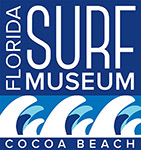

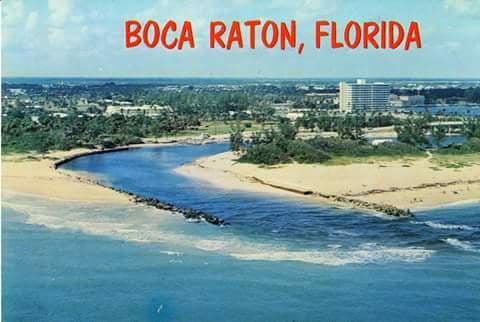

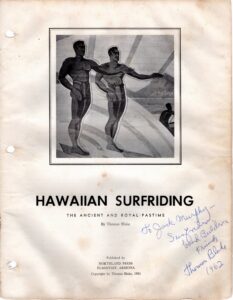

Leave A Comment